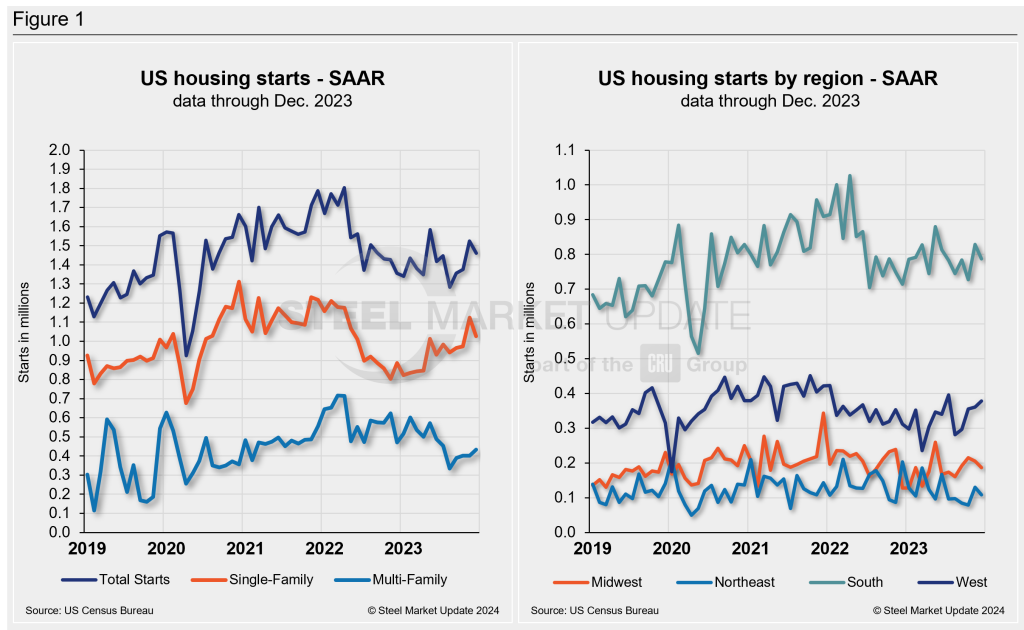Market Data

January 23, 2024
Housing starts decline in December even as interest rates fall
Written by David Schollaert
US housing starts moved lower in December, even as single-family production topped the million mark for the second straight month, according to the most recent data from the US Census Bureau.
Total privately owned housing starts were at a seasonally adjusted annual rate (SAAR) of 1.46 million in December, 4.3% below the revised November estimate of 1.525 million, Census said on Jan. 18. This was, however, 7.6% above the December 2022 rate of 1.357 million starts.
Single‐family housing starts saw an 11.2% month-over-month (m/m) decline in December to 1.027 million vs. the revised November figure of 1.124 million.
Regionally, starts were down across the board m/m. The Northeast and West saw the sharpest declines, down 20.1% and 11.6%, respectively. They were followed by a decline of 10.7% in the Midwest and 5.5% in the South.
Meanwhile, the total number of privately owned housing units authorized by building permits in December stood at a SAAR of 1.495 million, 1.9% more than the revised November rate of 1.467 million but 6.1% higher than the December 2022 rate of 1.409 million.
“Mortgage rates steadily fell below 7% in December, and lower rates combined with a lack of existing inventory in most markets helped to keep single-family production above a one million-unit annual pace,” Alicia Huey, chairman of the National Association of Home Builders (NAHB), said in a statement.








